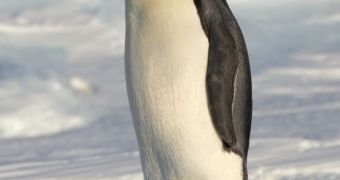Most penguin populations, some of which are iconic to the Antarctic regions, are in danger of declining or going extinct altogether, a new International Union for the Conservation of Nature (IUCN) report unveiled in Barcelona this week, where the World Conservation Congress is held. Statistics show that some populations have already lost more than half of their individuals and that the trend is on the rise.
With significant global climate change comes increased damage to the environment and the wildlife species on both land and seas. While tropical animals face temperature rise and habitat reduction, penguins in the frozen regions of the poles experience hotter temperatures themselves. And while the increase in temperature alone is very likely to kill, the loss of ice at both the North and the South poles surely will.
Penguins, regardless of species, are entirely dependent on the ice for food, breeding space and the set-up of their colonies. Less ice means less food, which, in turn, leads to a severe decrease in the number of penguins, as evidenced by the severe decline that some Emperor Penguin populations experienced, of up to more than 50 percent of their original numbers. The West coast of the Antarctic is already 40 percent thinner than it was 50 years ago and, over the past 25 years, a steady decline has been observed in all species inhabiting the area.
Dr. Sybille Klenzendorf, a director of species conservation for World Wildlife Fund (WWF), said "From polar bears in the Arctic to penguins in the Antarctic, climate change is having a devastating impact on animals around the world. Penguin colonies on Antarctica have already experienced sharp declines over the past half century as rising temperatures have diminished sea ice conditions and the penguins’ access to food." This was most obvious early in the year, when many penguins landed in Rio de Janeiro, some 1000 miles off their regular course.
Polar bears and walruses experience similar situations at the North Pole, where their habitat is constantly shrinking. Countries such as Greenland already suffer from the effects of global warming and climate change and many species of animals are at the brink of extinction because of it.

 14 DAY TRIAL //
14 DAY TRIAL //